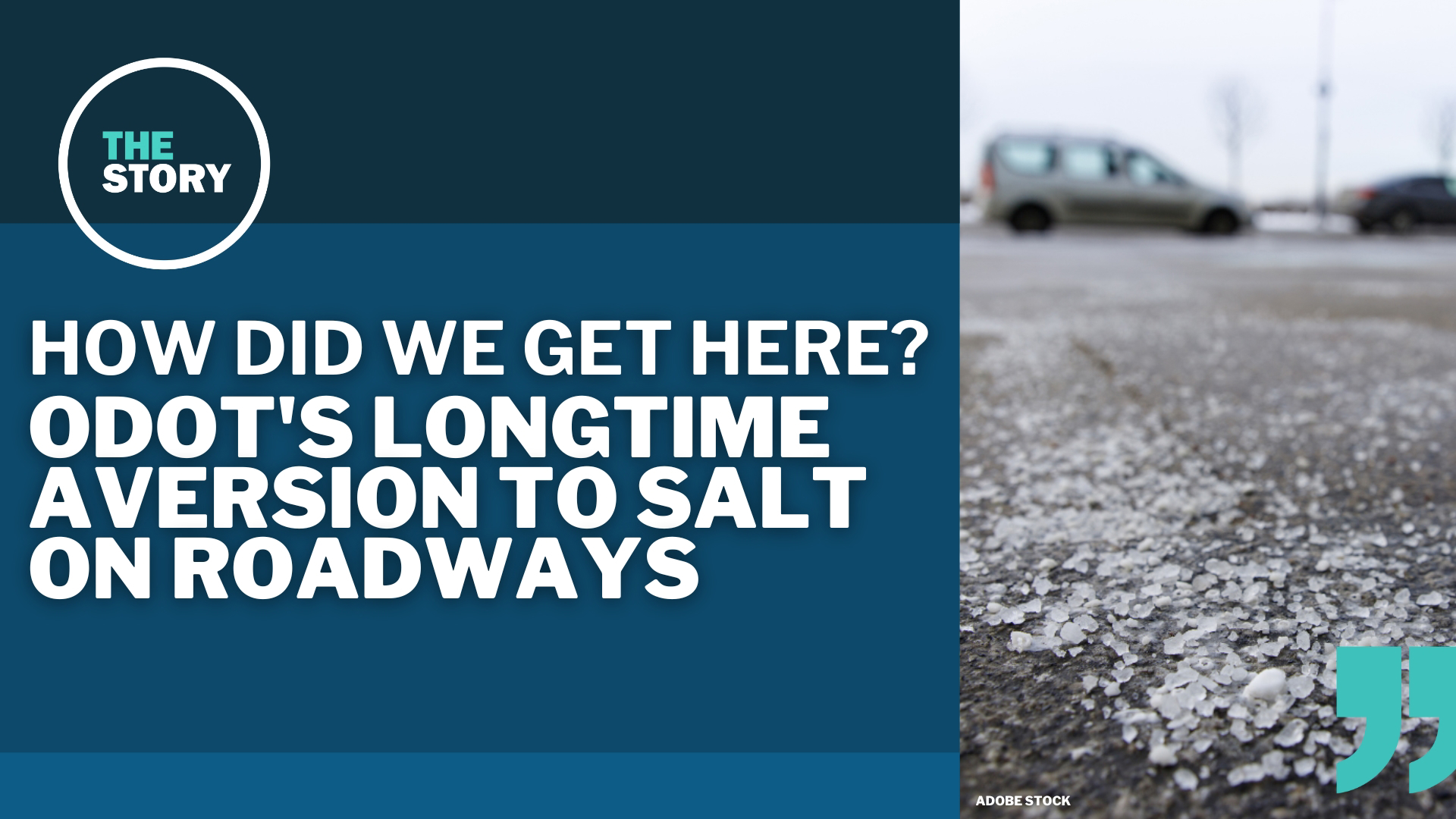PORTLAND, Ore. — With freezing rain and sleet in the forecast this week during a time typically busy with holiday travel, keeping the roads clear is a major concern. The KGW team of meteorologists expects that we'll see ice accumulation throughout the greater Portland area.
Both the Portland Bureau of Transportation and the Oregon Department of Transportation said that they are prepared to treat roadways in order to combat ice, at least on some major arteries.
PBOT has an online map that shows where they plan to lay down salt. "Salt routes" appear in purple on the map, and include major roads through the West Hills, the length of Southeast 82nd Avenue and roads on Swan Island, among a few others.
ODOT said that it plans to have salt ready as part of its arsenal, alongside magnesium chloride de-icer and sand. Road crews will be focusing on the major arterials, like I-5, I-205, I-405 and U.S. 26. The agency said it will make decisions locally as conditions develop.
Regardless, travel along Portland-area roadways is expected to be pretty dicey beginning Thursday evening and through Friday as ice accumulates and temperatures remain too low for melting.
"It's going to be a good time and into Friday to stay home, if you can," said KGW chief meteorologist Matt Zaffino.
For the latest reports on road closures and conditions in Oregon, visit TripCheck.com.
For up-to-date road closures and conditions in Washington state, visit wsdot.com.
Hazards in the Gorge
ODOT spokesperson Don Hamilton said icy road conditions will be a concern for Columbia River Gorge drivers in the coming days, with inclement weather incoming.
"Anybody who is planning holiday travels over the coming holiday weekend needs to plan ahead, that means know where you’re going, know what your travel plan looks like, check the TripCheck cameras to know what your destination looks like, and allow extra travel time," Hamilton said.
Hamilton said ODOT's salt trucks, de-icer trucks and sanding trucks are ready to treat the roads during dangerous weather on Thursday, Friday, and on into the weekend.
“Everybody should be watching the forecast very, very carefully," he said. "If you can plan ahead and leave before the storm hits, that’s always a very wise decision.”
On the Washington side of the Columbia River Gorge, crashes closed State Route 14 to freight traffic at different points Tuesday, something that may happen again this week.
"Slowing down for the conditions, you can’t expect to drive 55 mph in weather conditions like this," said Washington Department of Transportation spokesperson Tamara Greenwell.
Greenwell said the forecasted weather may be difficult to manage if temperatures are at or just below freezing.
"There’s a very difficult transition point where we’re working to get the de-icer down but we don’t want that de-icer to be washed off by the rain that’s coming or traffic that’s on the roadway," she said. "But then there’s a period when it start to freeze."
An incoming storm, she said, paired with a much-anticipated holiday weekend, will create difficult conditions for drivers.
When salt went out of style
It wasn't always a foregone conclusion that ODOT would be out laying down salt during a winter storm. Until fairly recently, that simply wasn't the case.
ODOT believes that the agency used salt on the roads up until the 1950s, but then stopped. They can't find records as to why they abandoned it, specifically. For decades afterward, ODOT and other local agencies — including PBOT — avoided using salt when the weather brought snow and ice.
Looking back at it now, there's a likely reason for that decision: salt is bad for the environment.
Road salt hurts plant life on the ground, then aquatic life as it washes into streams and rivers. Those effects build up over time. Excessive salt can also be damaging for vehicles, roads and bridges.
Salt is also expensive to store, and it's expensive to fix the damage that it can cause over several years.
But as rare winter storms became more common, ODOT started to rethink its avoidance of salt. In 2012, the agency launched a pilot program to test the use of salt at the border with California.
ODOT concluded that salt was effective for reducing crashes. It also found minimal soil contamination, and a nearby stream showed elevated levels of salt.
Then, in December 2016, a storm appropriately dubbed "Snowmageddon" descended on the Portland area. Thousands of people were stuck in their cars on Highway 26 for as long as 8 hours. Many people just abandoned their cars and walked home.
After that debacle, ODOT launched another pilot program, this one testing the use of road salt on certain highways in the Portland metro area. The program had popular support, especially after several more storms over the next year once again left people stranded in their cars for hours.
Now at least some of the major routes through Portland will be treated with salt during a winter storm like the one we're anticipating. Others get liquid magnesium chloride, another corrosive substance, or sand.

